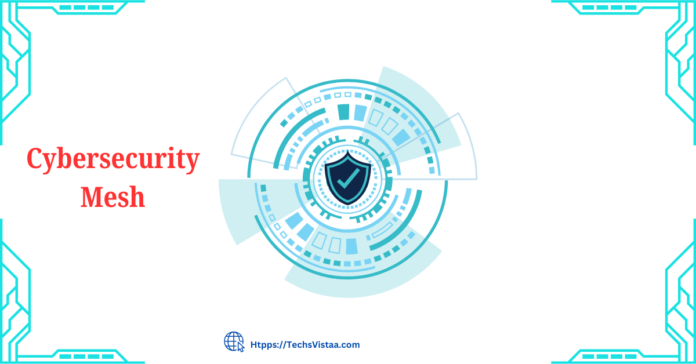As organizations drive along the road of digital transformation, they increasingly intertwine operational technology to implement smarter solutions that transcend their previous capabilities. Businesses with properties distributed across several platforms are not only facing security issues today but also those that necessitate a secure strategy that has mobility and flexibility enough to handle the possible threats of the future. It is a concept of cybersecurity mesh that rises to the forefront here, and it is not only a security solution, but it also is a full strategy aiming at the protection of any kind of IT assets no matter where they are.
The Evolution Towards Cybersecurity Mesh
The security approach that is based on the assumption that the outer perimeter is protected like a fort was the backbone of the cybersecurity framework for many years. Cloud services, IoT devices, and remote work have exposed the IT domains to unauthorized access as the boundary has been made irrelevant. According to Gartner, cybersecurity mesh is a great solution that can handle these issues. The best response is security control which will be spread over a vast area and can be changed very quickly to the current environment.
The Architecture of Cybersecurity Mesh
The architecture for cybersecurity mesh requires several components working in harmony:
- Identity-Centric: Each device or user on a network has a unique identity, which forms the basis for establishing security parameters and allowing for personalized access control.
- Zero Trust Model: Aligning with zero-trust principles, cybersecurity mesh operates on the assumption of inherent risk within and outside traditional perimeters, enacting strict verification processes for every access request.
- Scalable Frameworks: Through connectors or APIs, security services can integrate and share relevant information regardless of physical or network location.
- Centralized Control with Distributed Enforcement: While enforcement points can be distributed throughout the mesh, policy management remains centralized to maintain oversight and consistency.
Advantages in Detail
By adopting cybersecurity mesh architecture (CSMA), organizations can leverage a multitude of benefits:
- Enhanced Security: With individualized perimeters, the attack surface is segmented, limiting potential damage from breaches.
- Flexibility and Adaptability: Organizations can implement new technologies or systems without overhauling existing security infrastructure.
- Simplified Compliance: Centralized policy management helps maintain compliance across different regions while adhering to local privacy regulations.
- Proactive Threat Detection: The interconnected nature of CSMA facilitates better analytics and threat detection capabilities by aggregating data from across all nodes.
Implementation Considerations
While CSMA offers many benefits, organizations should consider the following when implementing such a strategy:
Interoperability Assessment: Evaluate current systems for compatibility with CSMA principles—older systems may need updates or replacements.
Investment in Talent: Skilled personnel who understand both security and complex network architectures will be critical for successful deployment.
Data Privacy: Ensure personal data is handled following legal standards, especially when crossing international boundaries.
Cost-Benefit Analysis: Weighing the costs associated with transitioning towards a cybersecurity mesh against its long-term benefits will help in decision-making.
Industry Applications and Case Studies
Different industries apply CSMA tailored to their specific needs:
- Healthcare: Protecting patient data across various devices and platforms while maintaining HIPAA compliance.
- Finance: Securing transactions and customer data against a backdrop of stringent regulatory requirements.
- Retail: Providing secure customer experiences whether online or in-store through consistent identity verification processes.
Moreover, case studies from leading CSMA providers like Fortinet and Checkpoint offer insights into successful implementations, showcasing how businesses have strengthened their defenses against cyber threats by making the transition to a mesh architecture.
Future Prospects
The future will likely see artificial intelligence (AI) playing a more significant role within cybersecurity mesh frameworks. A.I.’s predictive capabilities can proactively manage threats and adapt policies in real-time based on behavioral analysis. As we progress further into Industry 4.0 with smart manufacturing and connected supply chains, CSMA could become the standard for enterprise-level cybersecurity.
Conclusion
Cybersecurity mesh represents a paradigm shift in how we perceive digital defense—recognizing the fluidity of modern cyber environments and providing a more granular approach to securing them. By integrating distributed yet interconnected security checkpoints into every facet of IT infrastructure, businesses not only strengthen their defenses but also enhance agility to respond swiftly to any threat landscape changes. As organizations continue their journey towards complete digitalization, adopting cybersecurity mesh strategies will be crucial in maintaining integrity, confidentiality, and availability across all digital fronts.


